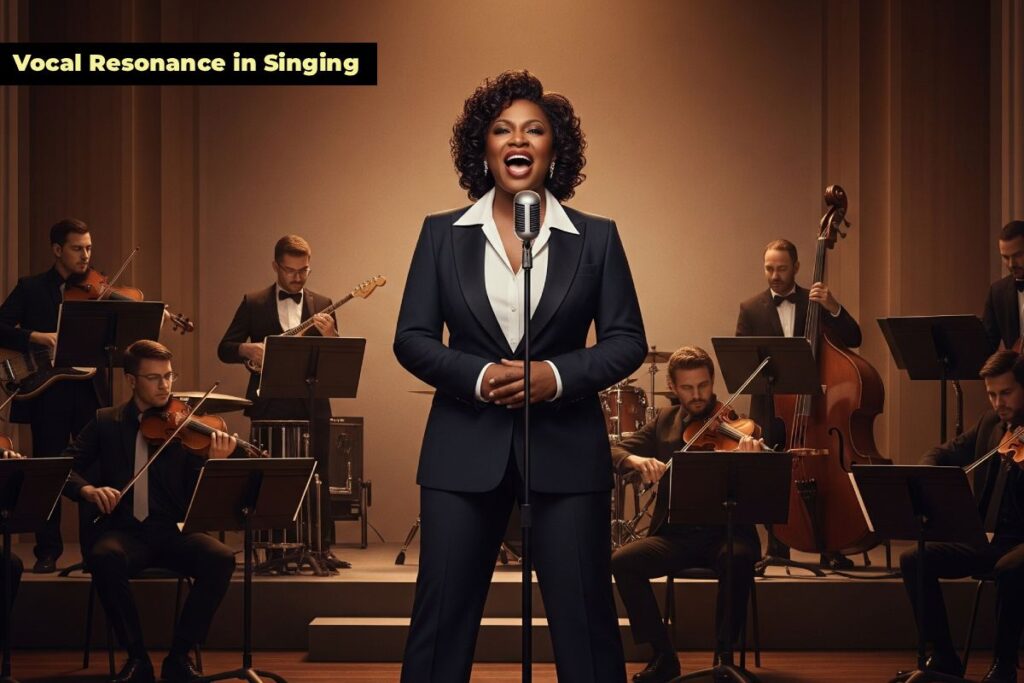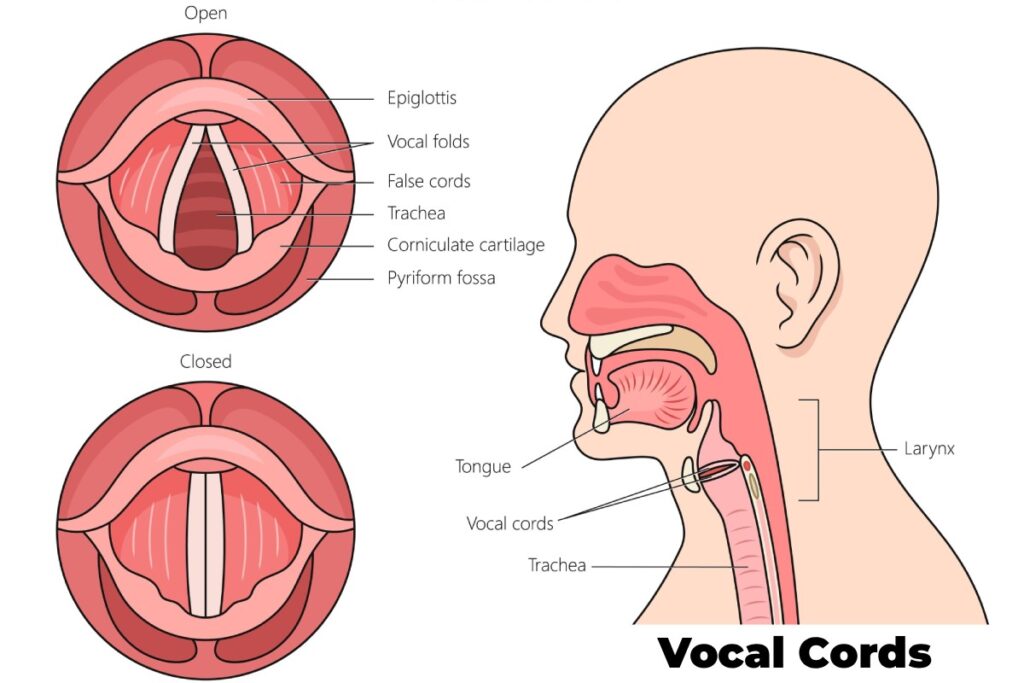What You Need To Know About Vocal Resonance In Singing

Vocal Resonance in Singing
The magic of vocal resonance can captivate you in an instant, whether you’re listening to a singer whose voice fills an entire concert hall without a microphone, or a speaker whose rich, compelling tone holds your attention with every word.
True vocal resonance isn’t just about being loud or interesting; it’s about producing a sound that’s powerful, beautiful, and unforgettable.
Just as a violin resonates differently from a guitar due to its structure, your vocal resonance shapes the richness, smoothness, and overall quality of your sound.
In this post, we’ll explore what vocal resonance really is, why it’s essential to great singing, how it connects with the Passaggi, and practical exercises you can use to strengthen it.
By the end, you’ll have tools to transition more smoothly and unlock greater freedom, power, and artistry in your voice.
So, without further ado, let’s explore what vocal resonance is and share some practical, engaging exercises to help you harness it.
What is Vocal Resonance?
Vocal resonance is the process by which sound waves, created by the vibration of the vocal folds, are shaped, modified, and amplified by the cavities in your body.
It refers to the amplification, enrichment, and shaping of sound produced by the vocal cords as it reverberates through the cavities of the throat, mouth, and nasal passages.
These cavities, your throat, mouth, nasal passages, and even your chest, act as resonators.

They don’t produce sound themselves, but they shape the sound into what we recognize as your Vocal resonance gives the voice its fullness, warmth, and unique tonal quality, transforming the raw vibration of your vocal cords into a rich, expressive sound.
Think of your voice as a musical instrument. The strings on a guitar produce vibration, but it’s the hollow wooden body that gives the sound depth and richness.
In the same way, your vocal folds provide the vibration, while your resonators give the voice color, warmth, and projection.
Without resonance, your sound would feel thin, flat, and weak. With good resonance, your voice can become full, vibrant, and expressive.
How Vocal Resonance Works
Think of your voice not just as a sound, but as an instrument. We all know that every voice is unique—but have you ever wondered why?
It’s not only about your vocal cords; it’s about how your entire body shapes the sound.
The truth is, your vocal cords only produce a basic, raw buzz. It’s an unrefined sound, like a single guitar string vibrating on its own, with no body to give it life.
The real magic happens next. What transforms that raw buzz into a full, rich, and compelling voice is the hidden amplifier within you: your vocal resonance.
The three main resonance areas are:
1. The Pharynx (Throat) – The Primary Amplifier
The pharynx acts like a megaphone, amplifying and projecting your voice. The openness and shape of your throat play a huge role in whether your voice sounds strong, full, or strained.
Singers often work on “lifting” and relaxing the throat to maximize this resonance.
2. The Oral Cavity (Mouth) – The Shaper of Sound
Your mouth is where words and tones are shaped. By adjusting the tongue, lips, and jaw, you can brighten or darken your sound.
This is why vowel modification is so important in singing—it allows smoother transitions and better tone quality.
3. The Nasal Cavity – The Color Enhancer
The nasal cavity adds a distinct quality to your voice. While too much nasal resonance can sound thin or “nasally,” controlled use gives clarity and projection, especially with sounds like m, n, and ng.
It’s like adding just the right amount of spice to a dish.
These resonance chambers, the spaces in your throat, mouth, and nasal cavity, act like the body of a guitar.
They take that simple vibration and shape it, amplify it, and fill it with character and power.
Understanding this process is the key to unlocking the full potential of your voice, whether you’re singing on stage or simply trying to be heard in a crowded room.
Why Vocal Resonance Matters in Singing
When it comes to singing, vocal resonance isn’t just a technical detail, it’s the foundation of healthy, expressive, and confident performance.
It is more than just “making your voice louder.” It’s about creating a tone that feels effortless, projects naturally, and connects emotionally with listeners.
Think of your voice like a lightbulb. The vocal folds create the light, but resonance is the lampshade, it shapes, colors, and directs that light so it’s either warm, bright, soft, or powerful.
Without the right lampshade, the light might feel harsh or scattered. With it, the light becomes something beautiful and controlled.
Here’s a deeper look at why it’s so important:
1. Smooth Transitions Between Registers
One of the biggest challenges singers face is moving smoothly between their vocal registers: chest voice, head voice, and mix voice.
Without proper resonance, these transitions often feel clunky, creating cracks, breaks, or sudden shifts in tone.
Resonance acts like a bridge, allowing your voice to glide seamlessly across these breaks.
Instead of sounding like two different voices stitched together, resonance helps unify your sound, so it flows effortlessly.
2. Better Vocal Health
Many singers, especially beginners, push their voices too hard when they try to sing higher or louder.
This often leads to strain, tension, and even long-term damage to the vocal folds. Resonance changes that.
By letting the resonators (throat, mouth, nasal cavity) do most of the amplifying, singers can project powerfully without forcing the voice.
This means less wear and tear, fewer sore throats, and a healthier instrument that lasts for years.
3. Greater Expressive Power
Think about your favorite singers, they don’t just hit notes; they make those notes mean something. That magic comes from resonance.
By shaping the sound, resonance adds color, warmth, brightness, or depth, depending on how it’s used.
A resonant voice can sound intimate and tender in one moment, then bold and powerful in the next. This flexibility makes performances far more captivating and emotionally moving.
4. Confidence in Singing
When singers struggle with transitions, they often feel anxious on stage, worried that their voice might crack or fail. Resonance provides consistency.
Once you’ve trained your resonators to work with you, those tricky spots in your range feel natural and reliable.
And when you’re confident in your instrument, you can shift your focus from “just surviving the song” to truly expressing artistry, storytelling, and emotion.
In short, resonance is the bridge between technique and expression. Without it, even strong vocal cords struggle to deliver a smooth, beautiful sound.
How Vocal Resonance Creates Smooth Transitions Across Passaggi
Think of your vocal cords as the engine of your voice, creating the initial sound.
Your vocal resonators, the hollow spaces inside your throat, mouth, and nose, are like the body of the instrument.
They take that raw sound and amplify, shape, and color it.
The way you shape these resonators can either encourage smooth transitions or hinder them.
When singers push or force air, they often neglect these resonators, causing a buildup of pressure that inevitably leads to a vocal break.
But when you learn to intentionally use this space, you can create a seamless vocal bridge, known as the Passaggio.
The Passaggio is the point in a singer’s range where their voice naturally wants to “flip” or change registers. For many, this is where the trouble begins.
However, by understanding and manipulating your vocal resonators, you can guide your voice through this transition with grace.
Instead of hitting a wall, proper resonance allows you to maintain a consistent tone and quality.
It’s like ensuring the road is perfectly smooth as your car drives over a hill, preventing any jarring bumps or sudden lurches.
By slightly adjusting your vowel shape and the feeling of where the sound is placed (often described as being in the “mask” of your face), you can keep the sound waves flowing, creating a beautiful and effortless connection between your lower and upper registers.
Final Note
Mastering vocal resonance is one of the most powerful ways to unlock your singing potential.
By paying attention to how your resonators shape sound, and by practicing targeted exercises, you can move past vocal “breaks” and develop a voice that feels natural, free, and compelling.
Great singing isn’t just about hitting the right notes. It’s about how those notes connect, how they flow seamlessly and resonate with warmth and clarity.
Understanding vocal resonance is one of the best ways to create smooth transitions in your voice.
The way you shape your resonators can either encourage a seamless Passaggio (the transition between vocal registers) or hinder it.
With patience, practice, and a deeper understanding of vocal resonance, you can transform uncertain transitions into smooth, confident expressions.
By mastering this skill, you unlock the full potential of your voice, making every note feel connected and every melody flow with ease.
At Phamox Music, we go all out for exactness and honesty. For this purpose, if by any means you found any possible glitch, be it factual, editorial, or something that we need to update, kindly contact us.
If you find the information provided in this post “Vocal Resonance in Singing” interesting and helpful, kindly share it with someone you know that might need it.







